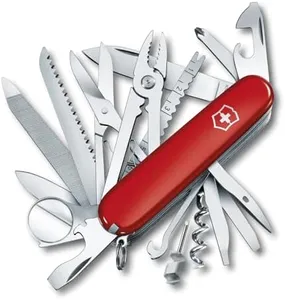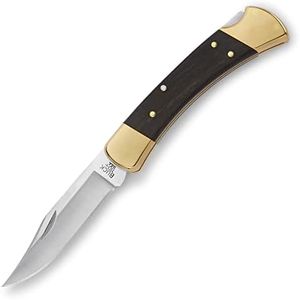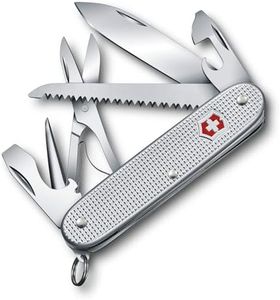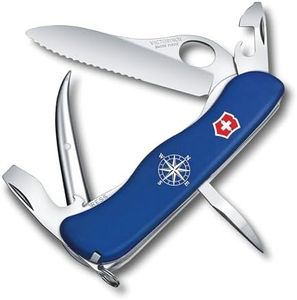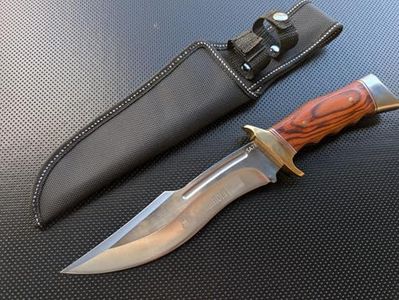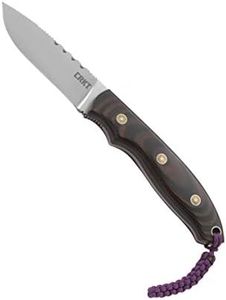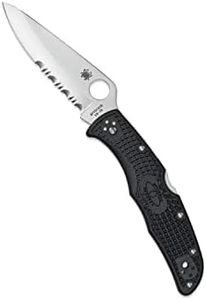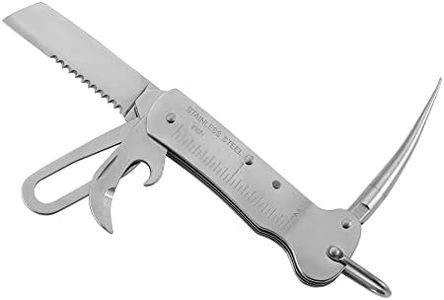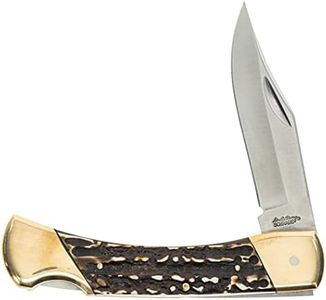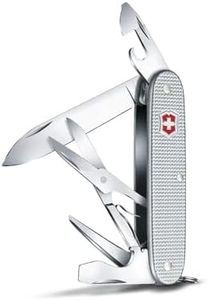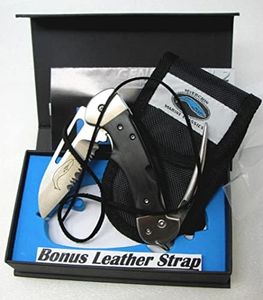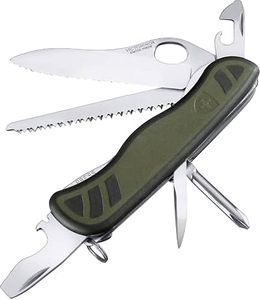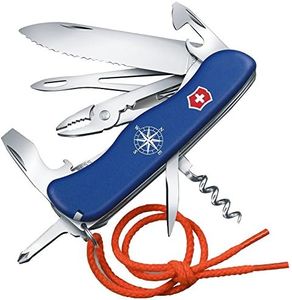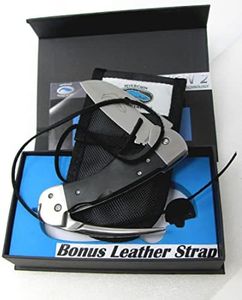We Use CookiesWe use cookies to enhance the security, performance,
functionality and for analytical and promotional activities. By continuing to browse this site you
are agreeing to our privacy policy
10 Best Sailors Knife
From leading brands and best sellers available on the web.Buying Guide for the Best Sailors Knife
Choosing the right sailor's knife is important for anyone spending time on a boat, whether you're a beginner or a seasoned sailor. A sailor's knife isn't just a cutting tool—it's an essential piece of safety gear that can be used for everything from slicing rope and opening shackles to handling emergencies. When picking a sailor's knife, consider the specific situations you'll face on board, such as the types of ropes you'll need to cut, if you'll need to do tasks with wet or gloved hands, and how you'll carry or store the knife. Your goal is to choose a knife that's reliable, easy to handle, and durable against the marine environment.Blade MaterialBlade material refers to the kind of metal used to make the cutting part of the knife. This is crucial because saltwater can quickly cause rust and corrosion. Most sailor’s knives are made from either stainless steel or high-carbon steel. Stainless steel resists rust better but might need more frequent sharpening, while high-carbon steel holds an edge longer but can corrode faster without care. If you're mostly in saltwater environments, stainless steel is usually safer, while high-carbon steel can be great if you’re careful about keeping the knife dry and clean.
Blade ShapeThe blade shape affects how the knife cuts and what tasks it suits best. Common shapes are straight-edged, serrated, or a combination of both. Straight-edged blades are best for making clean, precise cuts, which is helpful for slicing rope. Serrated edges work better for sawing through tough or wet materials, such as thick ropes or lines. Some knives offer a combination edge for versatility. If your tasks tend to vary or if you expect to cut very tough ropes, a serrated or combined blade may be best, while a straight edge is usually easier to sharpen on the go.
Blade LengthBlade length refers to how long the cutting part of the knife is. Shorter blades (under 3 inches) are easier to control and safer for close-up work, which is often important on a crowded deck. Longer blades (over 4 inches) can cut through thicker lines more quickly but may be harder to handle and less precise. If you anticipate mostly precise tasks or want something easy to carry, a shorter blade is ideal. For heavy-duty cutting, a longer blade can be useful, but make sure it’s still manageable for you.
Folding vs. Fixed BladeA folding knife has a blade that tucks into the handle, making it more compact and safer to store in your pocket. Fixed blade knives have a blade that doesn’t fold, which usually makes them stronger and quicker to deploy in emergencies but bulkier to carry. If you want something always ready with maximum strength, a fixed blade might suit you. If portability and safety are top concerns, a folding blade is more convenient, especially if you have limited storage.
Grip and Handle MaterialThe grip or handle material determines how comfortable and secure the knife is in your hand, especially when wet or gloved. Common materials include rubber, plastic, or textured metal. A nonslip, textured handle offers the best grip and control, while smooth handles may be slippery and unsafe. For most sailing situations, especially if your hands may be wet or wearing gloves, choose a knife with a handle material designed for a secure, nonslip grip.
Additional Tools (Marlinspike, Shackle Opener, etc.)Some sailor’s knives include extra tools, like a marlinspike (for untying knots), a shackle opener, or even screwdrivers. These add versatility and can be very handy for sailing-specific tasks. If you regularly handle knots, a marlinspike can be invaluable. If you need to open and close shackles often, look for a knife with a shackle key. Choose based on the tasks you anticipate—if you just need a cutter, a plain knife is fine; if you need to manage various rigging jobs, go for added features.
Carry MethodThis refers to how the knife is attached to your body or gear, which affects how quickly you can reach it in an emergency. Some knives come with clips, lanyards, or sheaths you can secure to your belt or lifejacket. Quick access is vital on a boat, so pick a carry method that matches your routine and ensures the knife is always within easy reach but also secure so it doesn't get lost.
